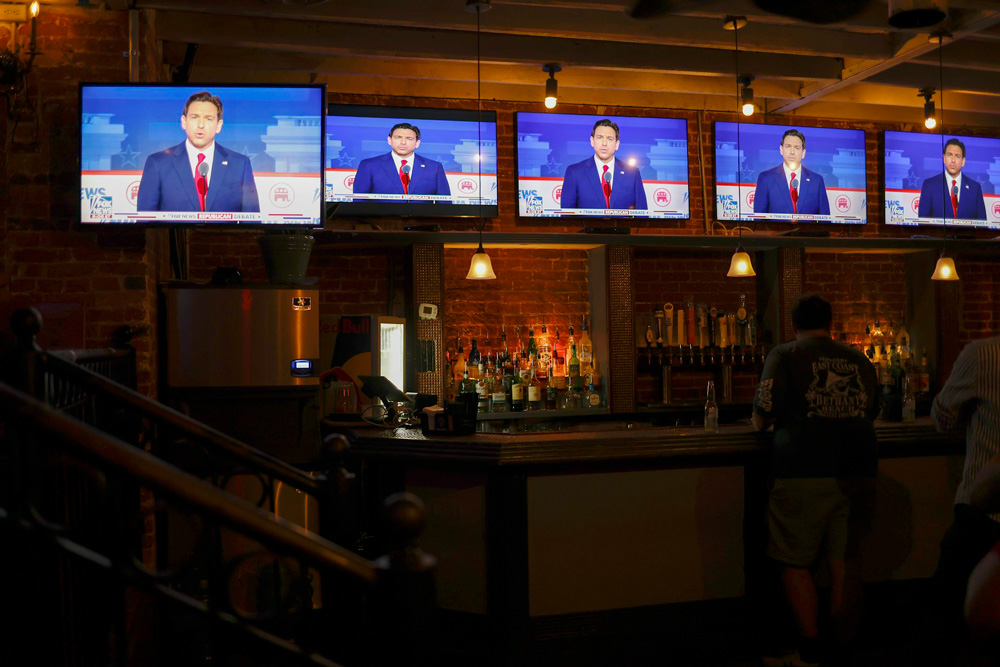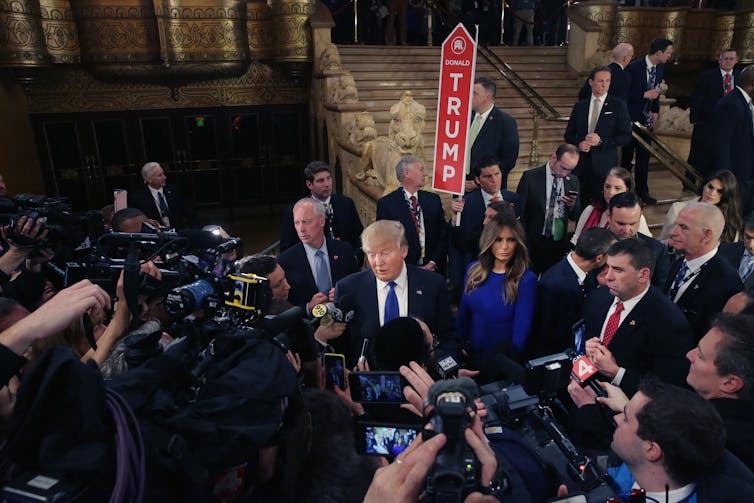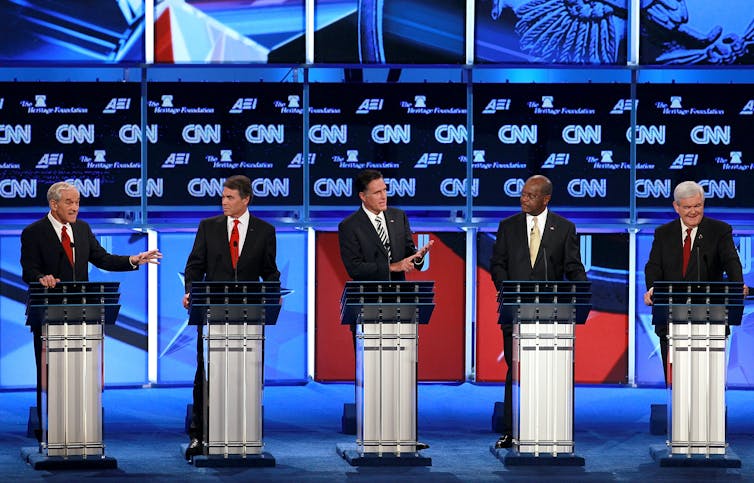
By Karyn Amira
It’s common to hear Americans complain about the media throughout presidential elections. Partisans tend to believe the press is biased against their side. These perceptions may lead people to believe the media can affect how people vote.
Political scientists have found some evidence that media bias can push people to vote for Democrats and Republicans in presidential contests. But we theorize that media influence is actually stronger in primary elections.
Why?
In a general election, most people plan to vote for their party’s candidate, meaning a large portion of the outcome is predetermined and there is less room for media influence. Moreover, in a general election, both major party candidates are inherently newsworthy. There may be some discrepancies in how much coverage each person gets, but the media cannot simply ignore one of them.
Primaries are different.
When candidates are from the same party, voters cannot rely on their partisanship to make a choice. Instead, they must sift through candidates within one party and learn about them. Since media have more leeway to focus on some people over others in this context, they help choose which candidates voters hear about in the first place.
And those choices are potentially meaningful.

Chip Somodevilla/Getty Images
Patterns of primary coverage
I am a political scientist who researches and teaches about patterns in political media, including how the press has decided which Republican primary candidates to focus on from 2012 until now.
A widely discussed pattern in primary coverage is called “discovery, scrutiny, decline.” When a candidate says something novel, they are “discovered” and receive a burst of coverage. This attention brings momentum, making them subject to “scrutiny,” which then pushes their polling numbers back down and they “decline.” This trend is likely due to the media’s appetite for novelty.
The pattern does not hold for all primaries, but explains some on both the Republican and Democratic side. Additional research also confirms that the media leads the public in this dynamic rather than vice versa.
Here are the recent presidential primaries that demonstrate changes in the discovery, scrutiny, decline pattern and the media’s process of focusing on some Republican candidates over others.
2012 – the ‘Bubble Primary’
The GOP presidential primary in 2012 provides the clearest example of discovery, scrutiny, decline. Though Mitt Romney dominated the polls on average, other candidates – such as Herman Cain and Rick Santorum – would occasionally say something noteworthy, get bursts of coverage, then face scrutiny and decline. Reporter Matthew Jaffe called this the “Bubble Primary,” in which a new candidate would float to the top of the pack like a bubble, pop, and then sink.
2016 – Trump dominates
There were muted levels of discovery, scrutiny, decline with some candidates in the 2016 GOP primary. For example, Ben Carson, a political outsider with a unique backstory, received a burst of media attention before the scrutiny process kicked in and he then declined in popularity. This pattern was not the central story of this cycle though.
Ultimately, Donald Trump got the majority of Republican news coverage. His constant provocative statements meant the media kept “rediscovering” him, thereby thwarting the “decline” stage. By the end of the general election, The New York Times estimated that Trump dwarfed every other candidate and received nearly US$2 billion in “free media,” an estimated amount a campaign would need to pay in ads rates to get comparable coverage.
If the magnitude of his coverage was unique, so was the effect. Whereas media attention drove sustained public curiosity for other Republican candidates – which is different from support – researchers have found that Trump’s level of coverage actually increased his poll numbers, which do indicate support. Trump then dominated the news cycle into his presidency.

Mark Wilson/Getty Images
2020
The Republican Party canceled some of its primaries in 2020, allowing Trump to run virtually uncontested.
2024
Most of the past discovery, scrutiny, decline patterns have taken place while candidates debated and campaigned in the early primary or caucus states. The 2024 GOP primary has been different.
Eight Republican candidates participated in debates while Trump sat them out and focused his campaign efforts elsewhere. Though these debates generated small moments and poll bumps for some candidates – such as Vivek Ramaswamy in August 2023 – this time period did not produce a series of clear and obvious flavors of the week.
Instead, prominent outlets seemed to have fixated on a – potential – Republican nominee literally years before debate season: Ron DeSantis, the governor of Florida, who did not declare he was running until May 24, 2023. Even though coverage of Trump became more prominent as the primary season picked up in 2023, this early selection of DeSantis is the more unusual story of American media behavior.
‘Choosing’ DeSantis
In the months after the 2020 election, Fox News asked DeSantis to appear on the network almost every day. New York Times journalists suggested the network was “promoting” his inevitable campaign.
But the New York Times itself published a slew of articles that increasingly sounded like DeSantis was the inevitable nominee, culminating in the 2022 article “Did Ron DeSantis Just Become the 2024 Republican Front Runner?”
The New York Post in late 2022 featured him on their front page with the title “DeFUTURE.” Though some reporters hedged their language about DeSantis’ prospects, headlines like these are nonetheless signals to the public about a politician’s viability, which voters use to make decisions.
The abnormally early focus on DeSantis could have been because he was genuinely newsworthy given his controversial COVID-19 policies, he increased viewership or because, as one Fox producer said in an email, he is “the future of the party.” Ultimately, the hype was premature; DeSantis dropped out and endorsed Trump before the New Hampshire primary.
Trump throws a wrench
What can be made of all this?
The media is influential in telling the public who to consider. In 2012, coverage moved in distinct cycles, leading the public to focus on certain Republicans over others. In 2016, Trump benefited from this attention in ways others did not, allowing him to monopolize the spotlight for years and bond with his base.
Trump’s dominance – partially a creation of the American press – may have thrown a wrench into somewhat normal patterns of primary coverage, as some outlets then seemed to “discover” a new Republican candidate the moment Trump left the Oval Office.
Regardless of why major outlets selected DeSantis early, Trump has shown that when he is actively campaigning, he comes out on top and other Republicans mostly fade into the background.
![]()
Karyn Amira is Associate Professor of Political Science at the College of Charleston.




























Leave a Reply